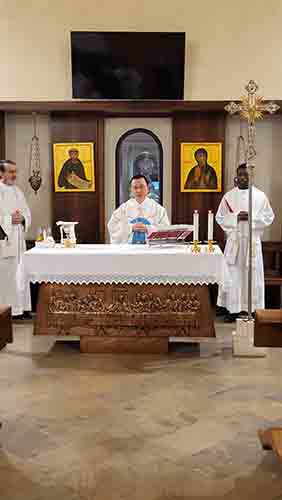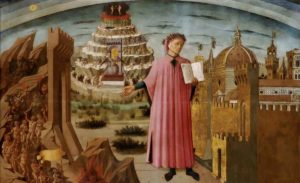In 2022 I was assigned to the Sacro Convento in Assisi, Italy. I must admit that it is a blessing to live in Italy. It seems that every town and city has its own saint or miraculous event. A couple of times a year the community of friars in the Sacro Convento organise a pilgrimage to one of these places. In March of this year we visited the shrine of Lanciano, famous for its Eucharistic Miracle. Let me tell you a little about it.
Shrine
The shrine itself is under the care of the Conventual Franciscans, and has been for most of the last 800 years. It is located in the city of Lanciano in the region of Abruzzo, a region found on the Adriatic side of the country. The present church dates from 1258, six years after the friar’s arrival, and is dedicated to St. Francis. In 1809 the friars were forced to leave the shrine, when Napoleon suppressed the religious orders, returning only in 1953. The Eucharistic Miracle, however, pre-dates the friar’s arrival by many centuries.

Eucharistic Miracle
Much study has been made into the dating of the miracle. It is believed to date back to the period 730 – 750 A.D. This was a time when the Basilian monks had a monastery in Lanciano. These Basilian monks were amongst the many Greek monks who had taken refuge in Italy to escape persecution in the East during the “iconoclastic struggle”.
The story goes that one day a monk was celebrating Holy Mass and was assailed by doubt about the real presence of Jesus in the Holy Eucharist. He pronounced the words of the consecration of the bread and wine, when suddenly, before his eyes he witnessed the transformation of the bread into Flesh, and the wine into Blood.
Relics

In 1920, the Relics of the Miracle were placed behind the new high altar of the church. Since 1923, the flesh has been exposed in the rays of a monstrance, whilst the dried blood clots are contained in a sort of crystal chalice at the foot of this monstrance.
In 1970, at the request of the Archbishop of Lanciano and the Minister Provincial of the Conventual Franciscans of Abruzzo, and with the authorisation of Rome, the relics were submitted to scientists for testing. The results of the scientific tests proved, inter alia, that
- The “miracle meat” is truly meat made from the striated muscle tissue of the myocardium (the muscle layer of the heart);
- The “miracle blood” is real blood.
Shrine to-day
To-day, pilgrims to the shrine may view and venerate this Relic of Miracles. It is a “must see” visit if you are in the area. The church is located just a few minutes walk from the large public car park.



Strengthening our Faith
For us to-day this miracle is more relevant than ever before. We live, unfortunately, in a world of doubt as far as the Faith is concerned. Especially, faith in the Eucharist. We have only to witness the dwindling numbers of Catholics attending Holy Mass. And even some Catholics doubt the Real Presence of Jesus Himself in the Blessed Sacrament. We need miracles, and miracles like Lanciano can help relieve such doubts. And we should never forget that every day at Holy Mass we have the Miracle of Transubstantiation when, at the words of the priest, the bread and wine are transformed into the Body and Blood of Jesus Christ.
For many more photos from the pilgrimage, please visit https://www.ofmconv.net/en/assisi-visita-al-santuario-del-miracolo-eucaristico/
For more information please visit the shrine’s website www.miracoloeucharistico.eu
– friar Solanus Mary OFM Conv.



